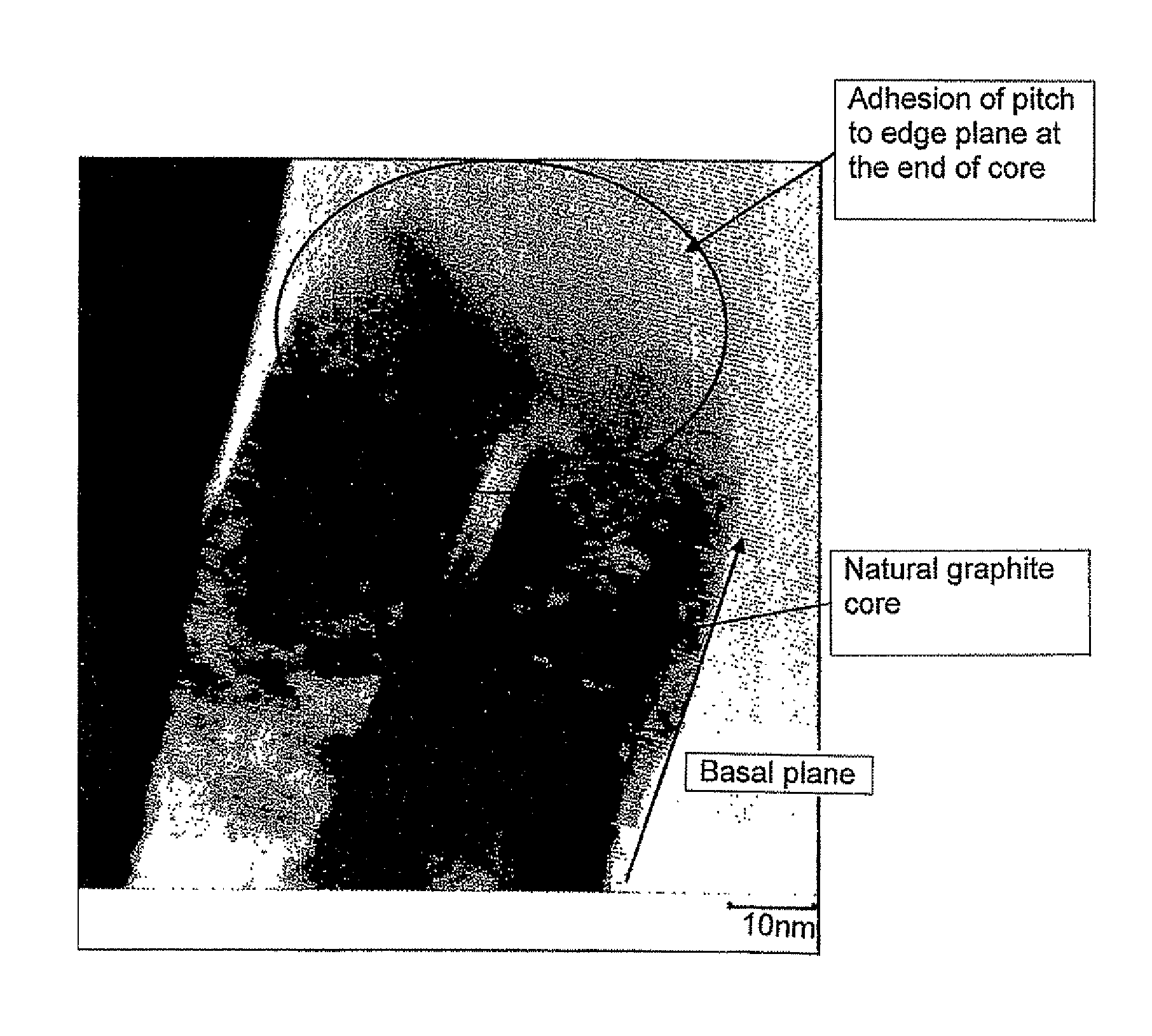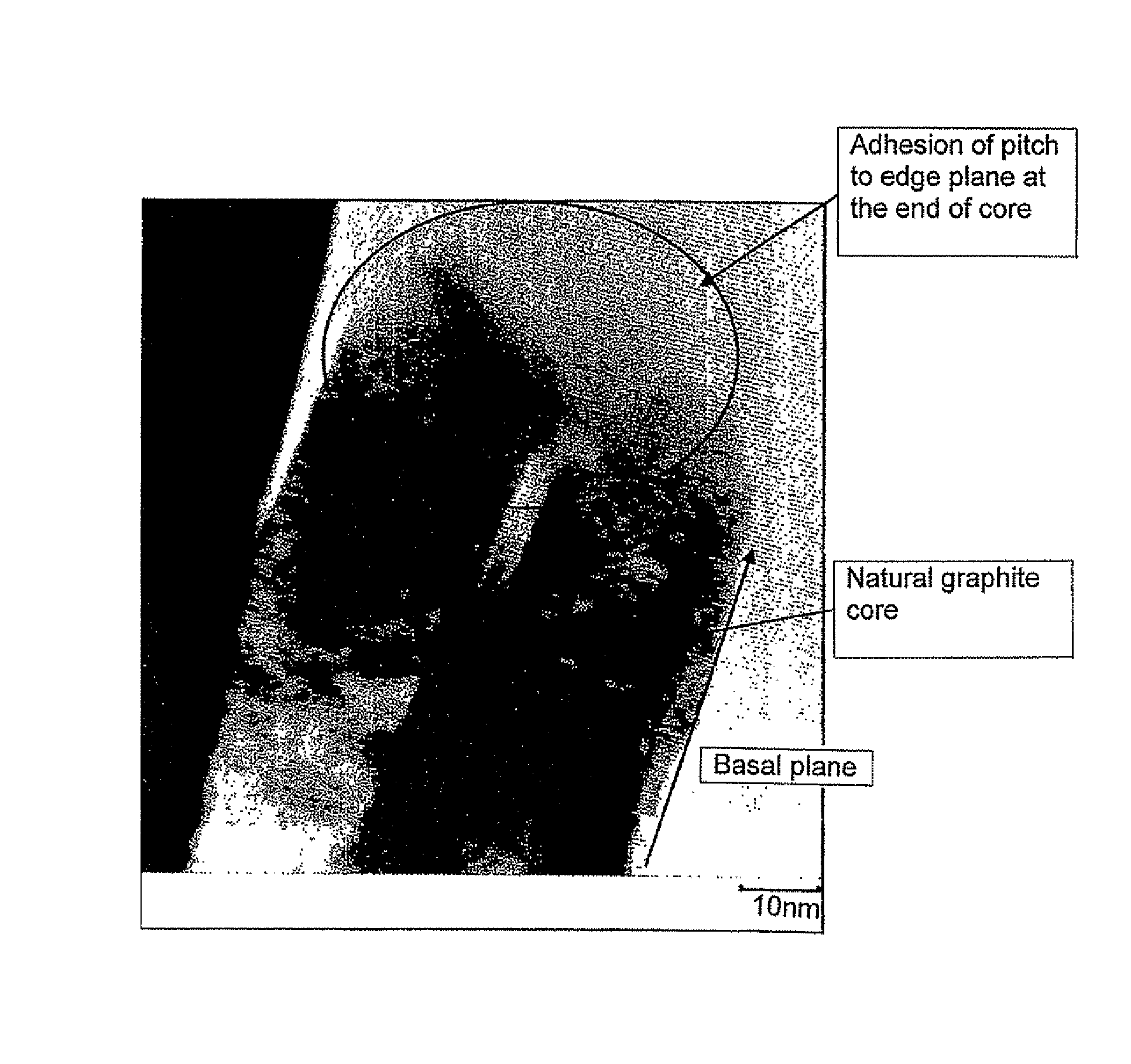Carbon material and a process for its manufacture
a carbon material and process technology, applied in the field of carbon materials, can solve the problems of excessive surface coating of carbonaceous materials, insufficient compression excessive particle strength of negative electrode materials, so as to improve charge and discharge efficiency and cycle life, the effect of increasing density
- Summary
- Abstract
- Description
- Claims
- Application Information
AI Technical Summary
Benefits of technology
Problems solved by technology
Method used
Image
Examples
example 1
[0070]95.5 parts of natural graphite powder which had undergone spheroidizing treatment and which had an average particle diameter of 19 μm and a specific surface area (S1) of 5.5 m2 / g and 4.5 parts of coal-derived pitch powder having an average particle diameter of 50 μm and a softening point of 85° C. were mixed in solid state using a V blender.
[0071]The resulting mixed powder was placed into a heating furnace, in which the powder is subjected to heat treatment in a nitrogen atmosphere at 1000° C. for 1 hour and then allowed to cool to obtain a carbon material in which low temperature calcined carbon formed by carbonization of pitch adhered to the surface of graphite powder. Sticking of the graphite powder particles to each other did not take place. The average particle diameter and the specific surface area (S2) of the resulting carbon material were measured.
PUM
| Property | Measurement | Unit |
|---|---|---|
| temperature | aaaaa | aaaaa |
| particle diameter | aaaaa | aaaaa |
| specific surface area S2 | aaaaa | aaaaa |
Abstract
Description
Claims
Application Information
 Login to View More
Login to View More - R&D
- Intellectual Property
- Life Sciences
- Materials
- Tech Scout
- Unparalleled Data Quality
- Higher Quality Content
- 60% Fewer Hallucinations
Browse by: Latest US Patents, China's latest patents, Technical Efficacy Thesaurus, Application Domain, Technology Topic, Popular Technical Reports.
© 2025 PatSnap. All rights reserved.Legal|Privacy policy|Modern Slavery Act Transparency Statement|Sitemap|About US| Contact US: help@patsnap.com


